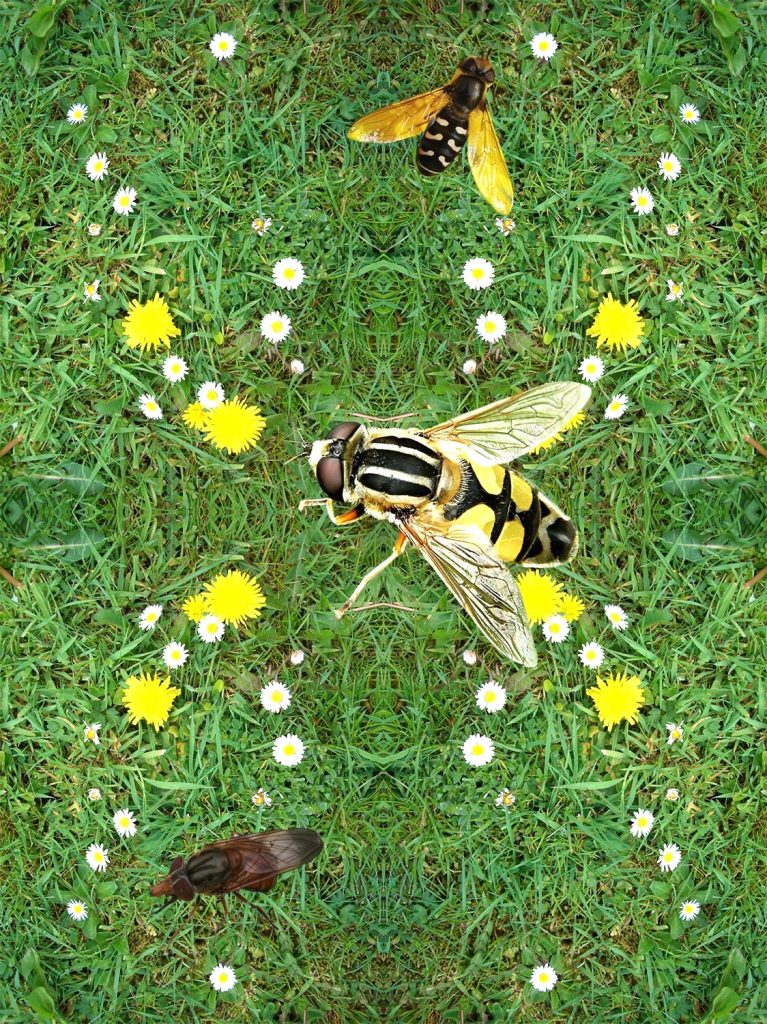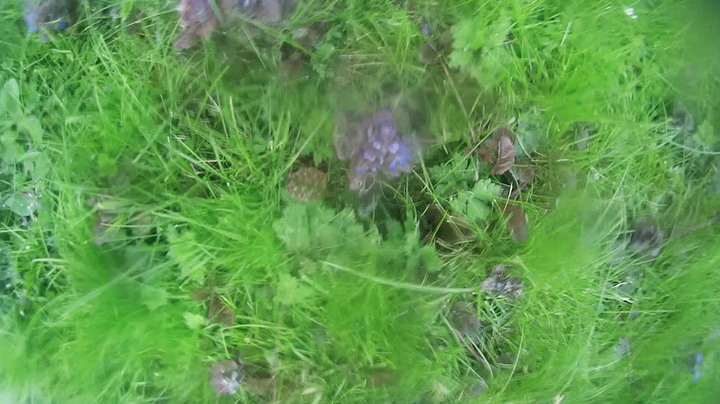Cross Pollination – Project One
https://crosspollinationartsciencecollaboration.wordpress.com
Hoverflies Project ‘Bio-Mimicry Masquerade’
Artist – Professor Karen Ingham working with Scientists Dr Natasha De Vere and Andrew Lucas at The National Botanic Gardens of Wales
 The project focuses on the important role of Hoverflies as ‘promiscuous pollinators’ ie. pollinators of a wide range of plants. Hoverflies are sometimes referred to as ‘the forgotten pollinators’ in that they don’t have the same appeal of the bee and the butterfly and most people confuse hoverflies with wasps as they often mimic the same pattern and colour coding. It is the Hoverfly’s ability to change its appearance, its ‘bio-mimicry masquerading’ that fascinates me and that I am exploring. The project allows me to follow on from the widely disseminated ‘Pollinator Frocks’
The project focuses on the important role of Hoverflies as ‘promiscuous pollinators’ ie. pollinators of a wide range of plants. Hoverflies are sometimes referred to as ‘the forgotten pollinators’ in that they don’t have the same appeal of the bee and the butterfly and most people confuse hoverflies with wasps as they often mimic the same pattern and colour coding. It is the Hoverfly’s ability to change its appearance, its ‘bio-mimicry masquerading’ that fascinates me and that I am exploring. The project allows me to follow on from the widely disseminated ‘Pollinator Frocks’
http://kareningham.org.uk/portfolio/science-art-technology/pollinator-frocks and uses a textiles based approach to create designs that play on the remarkable skill of the Hoverfly in mimicking so many other pollinating insects. I am also interested in using the bioinformatics data that Natasha De Vere and Andrew Lucas have generated with their research, which graphically demonstrates the breadth and importance of the Hoverflies pollination habitat. I would like to explore incorporating this into a design that they Gardens would then use as part of their public engagement activities.
Project 2:
Farming & Environmental Policy (‘When Less Is More’)
Artists – Professor Karen Ingham, supporting artist Ben Sharpe
Scientists – Professor Michael Christie, Duncan Coston, Professor Simon Potts and Dr Tom Breeze from Reading University, Dr Sophie Bennett, Sinead Lynch, Dr Sarah Beynon, Dr Paul Thompson
When Less Is More is a film installation that uses an arts based ‘practice
-led research’ methodology to explore the public’s understanding of; conceptualization of; and willingness to accept behavioral change, in relation to how we value nature from the perspective of pollinating insects and their plant counterparts. From an arts perspective the film is a development of Ingham’s previous research into pollinators and their habitats as examined in the globally disseminated multidisciplinary art and science project ‘Pollinator Frocks’: http://kareningham.org.uk/portfolio/science-art-technology/pollinator-frocks
From the science perspective, the underpinning research for the film is based on Professor Michael Christie’s (Aberystwyth University) research in the areas of Valuation of Nature for Ecosystem Service Sustainability, and Economic and Social Valuation of Biodiversity and Ecosystems, which provide the key scientific data that the film explores. The research of Prof. Christie’s colleague Dr. Sarah Beynon, of Beynon’s Bug Farm in Pembrokeshire, is also of key importance, and her farm in Saint David’s provides the location for the film.
The film questions how two different farming environments – one a species rich, minimally managed parcel of land and an equivalent area that is intensively managed and species specific – attract, interact with, and sustain pollinators.
The areas in question (which function as metaphorical ‘micro meadows’) are relatively small, about the size of a domestic front garden, with the intention of prompting the viewer to make the connection between the wider issues surrounding environmental farming practices in relation to domestic gardening practice. For example, the intensively mown, weed free, pristine green lawn is in effect a ‘green death’ for pollinators and is the equivalent of the intensively managed species poor parcel of land. how pollinators such as moths interact with the constructed meadows. The film aims to influence public perception and thus inform future policy decisions by arguing for more complex farm diverse practice and less sterile and intensive management practices in both agriculture and domestic arenas (field and lawn).

